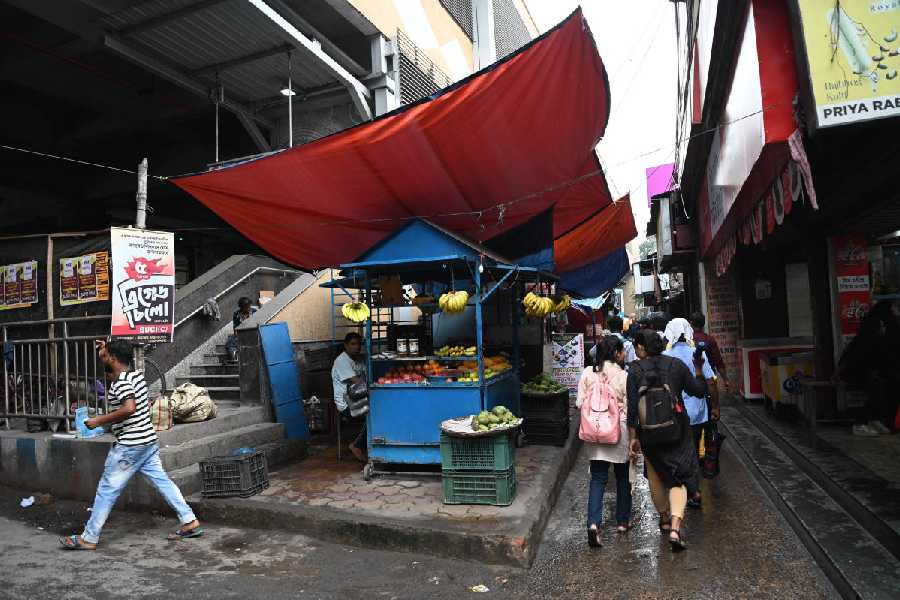Rules framed by the Bengal government based on a central law clearly define how street vendors or hawkers must operate.
The West Bengal Urban Street Vendors (Protection of Livelihood and Regulation of Street Vending) Rules, 2018, was notified four years after Parliament passed the Street Vendors (Protection of Livelihood and Regulation of Street Vending) Act, 2014. The act mandates that all state governments must have their own rules.
On Thursday, chief minister Mamata Banerjee gave a month’s time for the implementation of the rules.
The Telegraph takes a closer look at what the rules say:
- At least two-thirds of the width of a pavement must be free for pedestrians. Hawkers can occupy the rest.
“Two-thirds portion of the width of a footpath shall be earmarked so as to ensure smooth pedestrian movement and up to one-third for the street vendor,” Section 9 of the rules says.
In most places in Calcutta, hawkers make a mockery of the rule.
- “Any structure with tarpaulin or any other inflammable article shall not be allowed,” the rules state.
Other flammable articles, such as sheets of cloth, can be seen around many stalls.
In January 2019, a fire that started in a footpath stall spread through tarpaulin sheets and devastated two popular stores at the Gariahat crossing.
- Clause 6 of Section 14 of the rules bars vendors from occupying even an inch ofthe roads
In the New Market area, the entire road is occupied by hawkers on some stretches. In Hatibagan, the stalls are now inching towards the middle of Bidhan Sarani.
- Every civic body will have a town vending committee to identify and issue licences to hawkers, according to the legislation. The committee is empowered by law to regulate hawkers and take action against errant traders.
- The committee will draw up a list of vending and no-vending zones. A no-vending zone would typically include a bus stop, a small pavement and a narrow street or lane.
- The rules bar hawkers from blocking the entrance or exit of shops and houses and affecting the functioning of schools, colleges, hospitals and offices.
- In case of a violation, the town vending committee “shall cancel the registration or suspend the same for a particular period, as they think fit,” the rules say.Police should play an “appropriate role”.
On Thursday, chief minister Mamata Banerjee did not hide her displeasure with Calcutta’s town vending committee for failing to enforce the rules. She announced a five member-committee, which includes Calcutta’s mayor Firhad Hakim, to ensure the hawkers play by the book.
Hakim told The Telegraph on Thursday evening: “The town vending committee will still very much be there. The other committee will ensure that the rules are adhered to. The town vending committee includes hawker leaders. Errant hawkers often do not pay heed to the leaders.”











